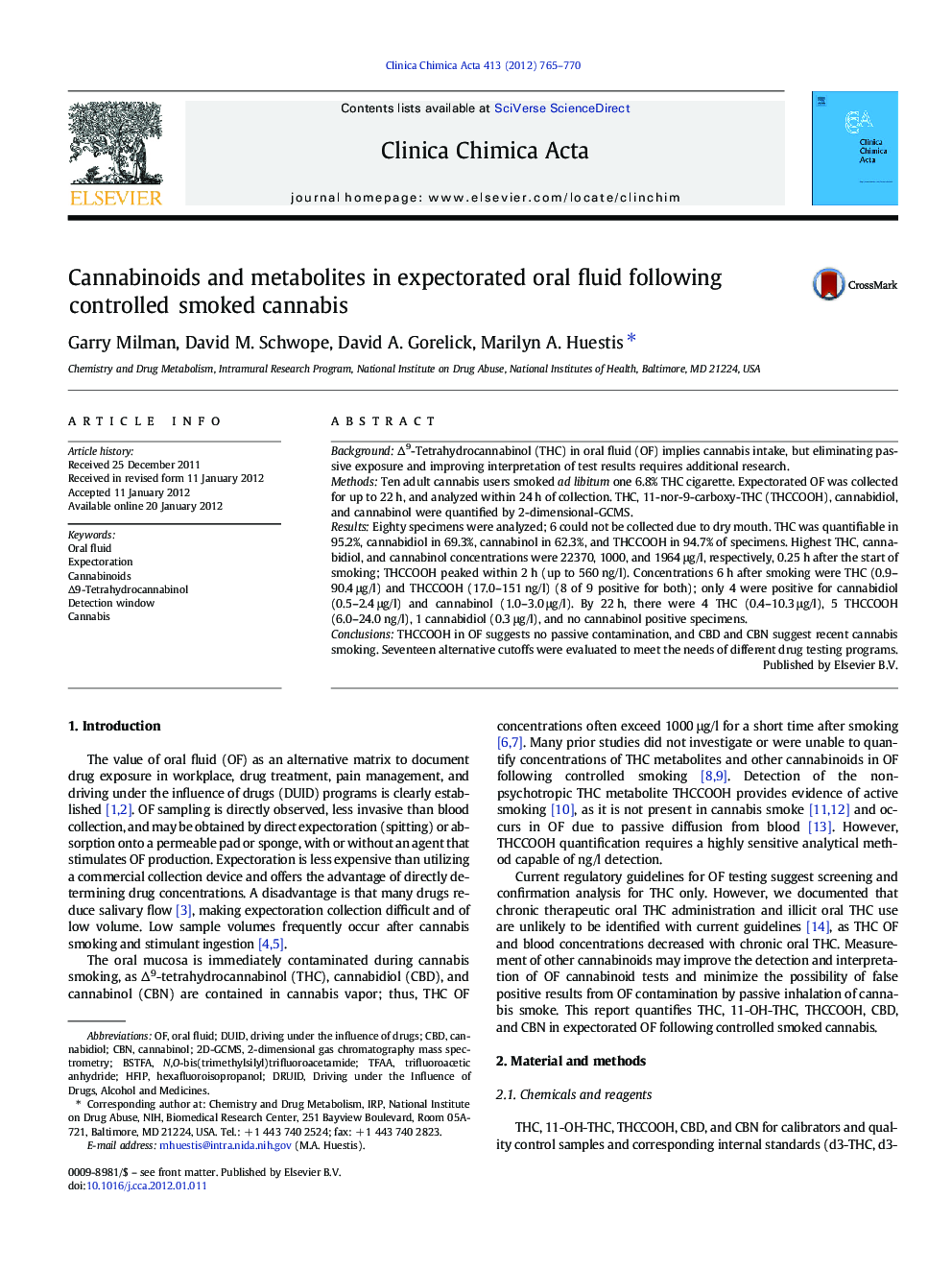| Article ID | Journal | Published Year | Pages | File Type |
|---|---|---|---|---|
| 1966068 | Clinica Chimica Acta | 2012 | 6 Pages |
Background∆9-Tetrahydrocannabinol (THC) in oral fluid (OF) implies cannabis intake, but eliminating passive exposure and improving interpretation of test results requires additional research.MethodsTen adult cannabis users smoked ad libitum one 6.8% THC cigarette. Expectorated OF was collected for up to 22 h, and analyzed within 24 h of collection. THC, 11-nor-9-carboxy-THC (THCCOOH), cannabidiol, and cannabinol were quantified by 2-dimensional-GCMS.ResultsEighty specimens were analyzed; 6 could not be collected due to dry mouth. THC was quantifiable in 95.2%, cannabidiol in 69.3%, cannabinol in 62.3%, and THCCOOH in 94.7% of specimens. Highest THC, cannabidiol, and cannabinol concentrations were 22370, 1000, and 1964 μg/l, respectively, 0.25 h after the start of smoking; THCCOOH peaked within 2 h (up to 560 ng/l). Concentrations 6 h after smoking were THC (0.9–90.4 μg/l) and THCCOOH (17.0–151 ng/l) (8 of 9 positive for both); only 4 were positive for cannabidiol (0.5–2.4 μg/l) and cannabinol (1.0–3.0 μg/l). By 22 h, there were 4 THC (0.4–10.3 μg/l), 5 THCCOOH (6.0–24.0 ng/l), 1 cannabidiol (0.3 μg/l), and no cannabinol positive specimens.ConclusionsTHCCOOH in OF suggests no passive contamination, and CBD and CBN suggest recent cannabis smoking. Seventeen alternative cutoffs were evaluated to meet the needs of different drug testing programs.
► THC quantification with CBD and CBN in oral fluid suggests recent cannabis smoking. ► Quantification of multiple cannabinoids improves oral fluid interpretation results. ► Blood in expectorated oral fluid artificially increase cannabinoid concentrations. ► Low oral fluid volume due to dry mouth hinders quantitative analysis after smoking.
